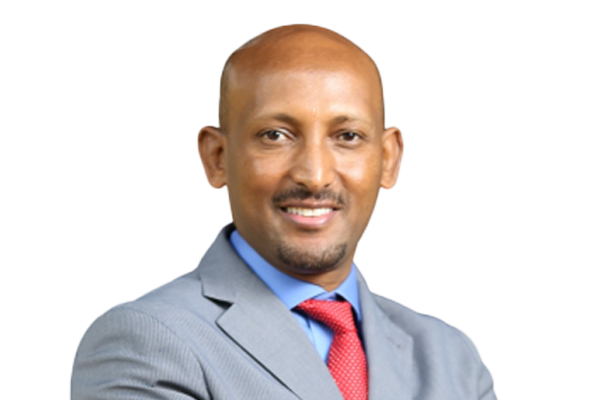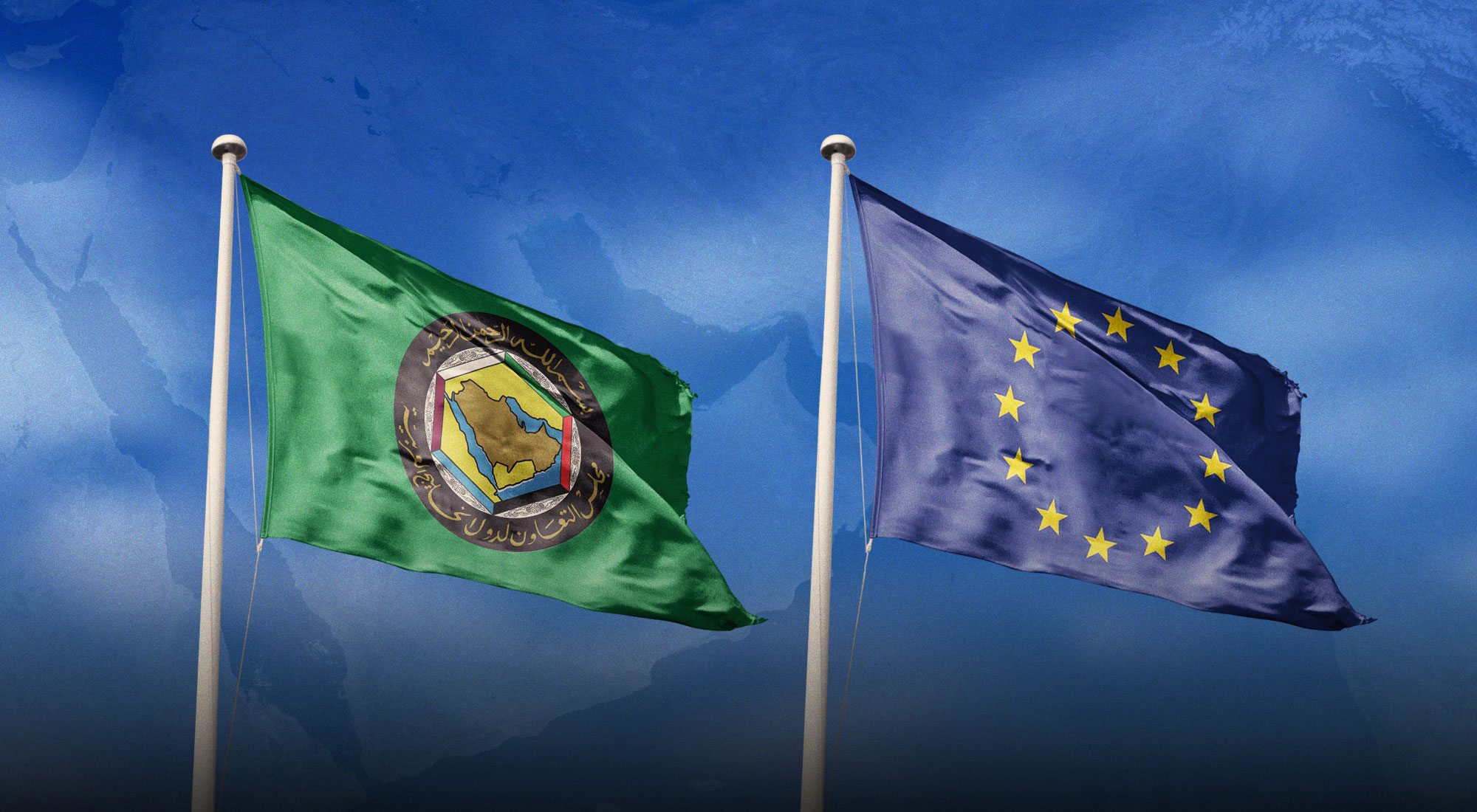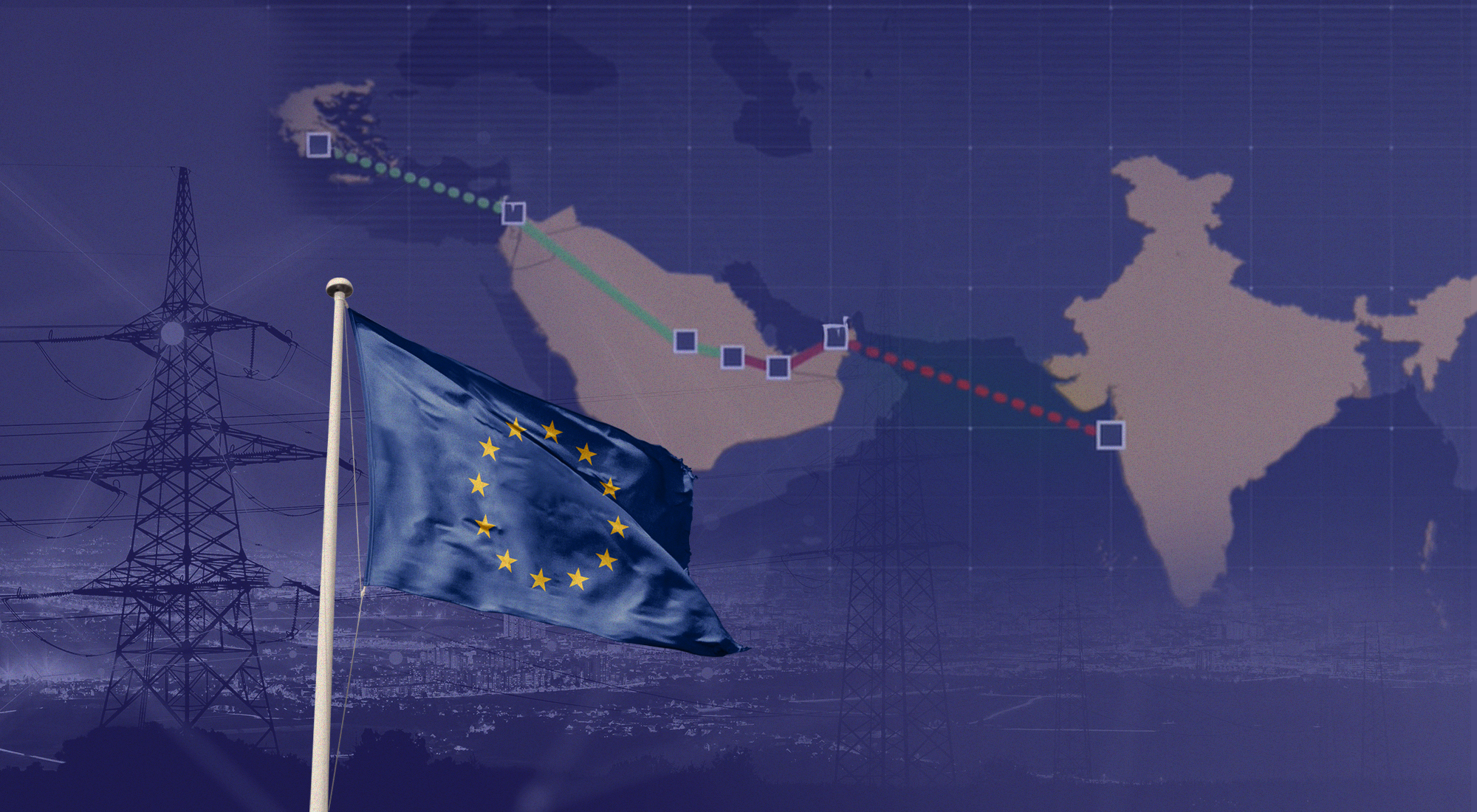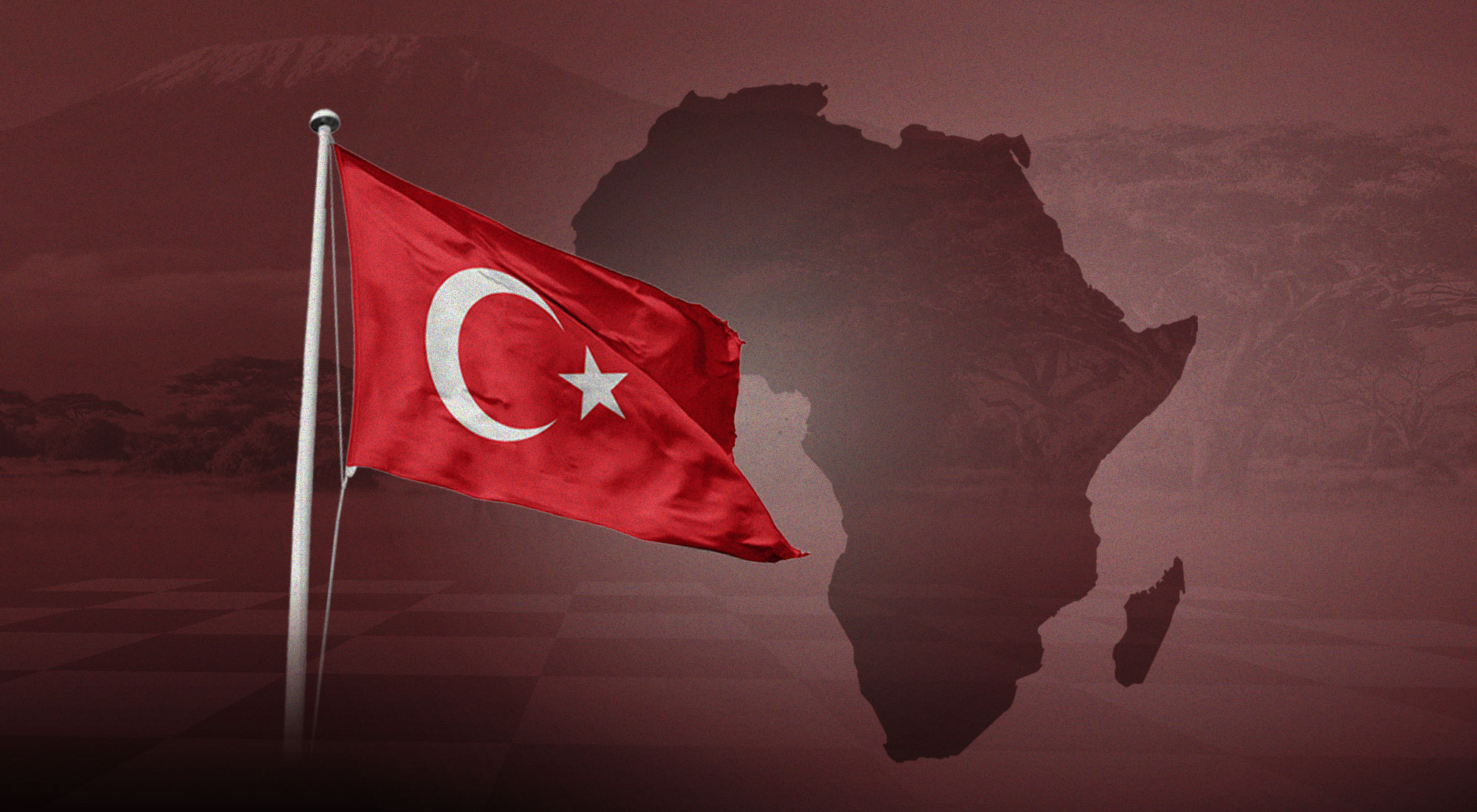Introduction
Migration and mobility dynamics vary in and across countries and regions of the continent.[1] Since 2000, the number of African migrants living outside Africa and those migrating within Africa has increased significantly. The number of African migrants outside their country of origin has almost doubled since 2010 to nearly 41 million people.[2] In 2020, around 21 million of these Africans were living in another African country, while 19.5 million were outside the continent.[3] Of the 281 million international migrants in 2020, Asian migrants constituted 40% of the total migrants, while 14.4% were Africans who had migrated within or outside the continent.[4] This constitutes an increase of 5.5 million African migrants in five years, which is a noteworthy change from five years earlier, in 2015, when this share was 14.1%.[5] In 2020, 56.4% of African migrants (11 million) were residing in Europe, while 25.6% (5 million) and 15.4% (3 million) were living in Asia and North America, respectively.[6] Europe is the largest destination for international migrants, followed by Asia, North America, and Africa, which hosts 9% of the total international migrants.[7]
Between 2015 and 2020, the average annual increase in African migration within Africa was 600,000. Africans living outside Africa also grew at an average of 500,000 per annum, from 17 million in 2015 to 19.5 million in 2020.[8] During the same period, remittances rose by around 10% until 2018. After an 8.1% decline in 2020, remittance inflows to Africa bounced back and increased by 14.1% in 2021.[9]
Globally, there are a record 59.1 million internally displaced persons (IDPs)[10] and 37.4 million refugees and asylum seekers.[11] In 2010, there were 10.5 million refugees and 14.7 million IDPs.[12] Africa, too, witnessed a significant increase in both external and internal displacement due to conflicts and disasters. In 2018, there were 24 million displaced persons in Africa, which comprised 17.7 million IDPs and 6.3 million refugees.[13] In 2022, many of the conflict hotspots and climatic shocks remain significant sources of displacement as the structural causes remain poorly addressed. Political instability and conflict are increasing, and with it displacement rates are rising. This trend is highly likely to continue, given the impact of climate shocks and conflicts.
Characterizing the state of migration within and outside Africa
Migration in Africa is mostly intra-regional; a primarily cross-border seasonal movement of laborers from contiguous areas during harvest time. Intra-African migration mainly happens for economic reasons, with people mostly moving in search of work in the informal sector.
As Figure 1 illustrates, intra-regional migration is more widespread in western and eastern Africa, due to the free movement regimes established more than five decades ago by the Economic Community of West African States (ECOWAS) and for the past two decades by the East African Community (EAC). Crucially, countries like South Africa, Gabon, Nigeria, Côte d’Ivoire, Algeria, Morocco, South Sudan, Sudan, and Djibouti are labor magnets due to their relatively higher wages, which attract many nationals from neighboring countries. South Africa remains the most significant destination country in Africa, with around 2.9 million international migrants. However, South Africa has increasingly implemented restrictive measures, including three-time amendments of the Refugee Act of 2008, creating an asylum system that “is rife with bureaucratic inefficiency, with years-long backlogs and lengthy appeals” and rejection rates as high as 96%.[14] As a consequence, the migrant population in South Africa has dropped by more than 9% since 2015, when the country had over 3.2 million international migrants.[15]

Figure 1. Regions from which African migrants are emigrating (Source: Africa Center for Strategic Studies, http://bitly.ws/xuDr)
Other countries with high immigrant populations as a proportion of their total populations include Gabon (19%), Equatorial Guinea (16%), Djibouti (14%), Seychelles (13%) and Libya (12%).[16] South Africa and Djibouti have the most restrictive immigration policies compared to the Seychelles, which has one of the most unrestricted visa requirement policies in Africa.
Extra-continental migration, like all migration, is a function of geographic proximity, network, and capabilities to migrate. Poorer countries have less extra-regional and extra-continental migration, except when they are geographically proximate.[17] Extra-continental emigration to Europe and the Middle East is higher from North Africa and East Africa, respectively, due to geographic proximity, and religious and colonial ties.
As Figure 2 illustrates, migration within and from Africa has almost doubled since 2010. After Africa, Europe is the second most preferred destination for African migrants. Some 27% of African migrants live in Europe, followed by Asia (12%) and North America (7%). An interesting trend to note is that Asia – mainly China, Turkey and India – was among the fastest-growing destinations for African migrants between 2000 and 2015, with an annual average growth of 4.2%.

Figure 2. Migration within and from Africa (Source: Africa Center for Strategic Studies, http://bitly.ws/xuDr)
As Figure 3 illustrates, migrants from North Africa constitute the highest number of Africans residing outside Africa.[18] In 2020, Egypt had the highest number of people living abroad (five million), followed by Morocco, South Sudan, Sudan, Somalia and Algeria.[19]

Figure 3. Top African Migrant Departures and Destinations (Source: Africa Center for Strategic Studies, http://bitly.ws/xuDr)
As illustrated in Figure 4, African countries are also among the top IDP and refugee producers and hosts in the world. In 2021, Africa hosted at least 32 million forcibly displaced people, of which 8 million were refugees and asylum seekers, and 24 million were IDPs.[20] The top five producers of displaced persons are the Democratic Republic of Congo (DRC), South Sudan, Somalia, Ethiopia, and Nigeria,[21] with the top five host nations being Uganda, Sudan, Ethiopia, the DRC, Chad, and Kenya.[22]

Figure 4. Displaced people in African countries (Source: Deutsche Welle, http://bitly.ws/y6L9)
In 2020, the most significant number of refugees in Africa originated from South Sudan (2.3 million),[23] with the majority hosted in neighboring countries such as Uganda. Globally, South Sudan ranked fourth in number of refugees, after the Syrian Arab Republic, the Bolivarian Republic of Venezuela, and Afghanistan.[24] With protracted conflicts in both countries, the second and third highest number of refugees in Africa originated in the Democratic Republic of Congo and Somalia. Other large refugee populations have originated from Sudan, the Central African Republic, and Ethiopia. Most refugees and asylum seekers on the continent were hosted in neighboring countries. Uganda, Sudan, and Ethiopia hosted the largest number of refugees in 2020.[25]
Depending on the specific refugee situation, refugees can develop beneficial relations with host states and communities; therefore, integrating locally, at least in some cases, can cause security, socio-economic health, and environmental concerns. When the number of refugees is high, the capacity of states to exercise effective control over situations within their territories is stressed. The demographic change caused by the presence of refugees in the local areas inhabited by competing kin ethnic groups also creates tensions between refugees and host communities, as well as neighboring states. Such tensions escalate to armed conflict if criminals and insurgents take advantage of the porous nature of the borders in order to carry out attacks on government positions and civilians, as was the case with rebel groups in the border areas. Similarly, refugee camps have been easy targets of violent authoritarian states[26] and terrorist organizations for recruitment into criminal activities or rebel militia and criminal syndicates that operate on the borders. The attacks on the Eritrean refugees hosted in Tigray, Ethiopia,[27] and the terrorist attacks on the Kenyan refugee camps where Somalis were hosted, are good examples. In some parts of Ethiopia, such as the Gambella region, demographic changes may trigger and exacerbate violent inter-ethnic conflicts between refugees and host communities.[28] These conflicts, when known to kin clans in neighboring South Sudan, often cause insecurity. Similar discontent has been noted in other border areas of Ethiopia.
In 2020, the most significant new internal displacements in Africa took place in the Democratic Republic of Congo and Ethiopia due to wars. By the end of 2021, there were over 2 million new conflict displacements in the DRC[29] and more than 2.2 million in Ethiopia, with the majority in the northern Tigray region.[30]
Six trendsetters in African migration and mobility
Having looked at the state of migration in Africa, this section turns to the six factors that will determine migration and mobility in Africa for the foreseeable future. These are (1) pandemics; (2) climate change shocks (especially floods and droughts); (3) demography and urbanization (fast-growing young population, expanding middle class, and rural-urban migration); (4) technology and infrastructure (transportation and communications advancements); (5) stability (governance, peace, and security); and (6) Pan-African integrative opportunities (economy and employment) and barriers (including identity politics and policies).
Pandemics: The great disrupters
Pandemics – such as COVID-19 and Ebola – remain the greatest disrupters of mobility. COVID-19 has highlighted the interplay between public health, migration and mobility, governance, elections, human rights, humanitarian aid, and peacebuilding. The measures employed to contain pandemics have had wide-ranging impacts on migration and mobility in Africa. Border closures in 43 of Africa’s 54 countries in 2020 led to the suspension of free movement arrangements.[31] According to some estimates, African Regional Economic Communities (RECs) witnessed a 50% drop in intra-regional mobility at the peak of the COVID-19 pandemic.[32] Border closures also damaged cross-border trade, disrupting livelihoods for frontier communities.[33]
COVID-19 has devastated many economies, and the impacts on migrants and countries of destination, transit, and origin linger. In countries of origin, less mobility means fewer earnings and remittances. A reduction in remittances – a vital source of foreign currency and household income that contributes to healthcare, education, and the reduction of poverty[34] – is likely to cause more social welfare crises.
With COVID-19-related travel restrictions lifted in most African countries, a rise in population movements is expected. Thus, regular migration and irregular flows within Africa and to other destinations, including the Middle East and Europe, may increase.
Climate change
Africa’s contribution to global carbon emissions remains small, but the continent is disproportionately affected by climate change-induced weather extremities, particularly floods and droughts.[35] Presently, over 50 million people in Africa are affected by drought and famine.[36] The 2021 climate change vulnerability index[37] shows that five of the ten countries most threatened by climate change are in Africa. More frequent climate change-related disasters will disrupt Africa’s GDP growth and increase violence and instability. Disasters destroy livelihoods, forcing many people to move, primarily to nearby places. Disaster-related events have further exacerbated existing crises, particularly in countries already in conflict such as Ethiopia, Somalia, Nigeria, and Mozambique. The impact of climate change on mobility and displacement reveals complex interplays between unpredictable weather changes, water insecurity, food insecurity, and migration.[38]
Demography and urbanization
With a median age of 18.8[39] and 70% of its population under the age of 30,[40] Africa is the youngest continent in the world. By 2030, young Africans are expected to constitute 42% of the global youth and 75% of those under the age of 35 in Africa.[41]
In order to realize a demographic dividend, the productivity of African economies will have to massively increase to absorb the 10 to 12 million people joining the labor force in the continent annually. According to current projections, this is likely to happen by 2054, which means that it will take at least three decades for Africa to reach a stage where economic growth begins to pay dividends in terms of sustainable development. Approximately 20 million jobs will need to be created each year.[42]
Moreover, there is a notable trend toward urbanization in Africa. Millions of young people are migrating to urban centers, searching for employment and a better life.[43] With an average urbanization rate of 4.1%, Africa’s towns and cities will grow faster than any others in the world.[44] In 2030, Africa will have more employed people than China and India.[45]
However, such positive megatrends may foretell a more pessimistic scenario. Caught between aspiration (for better living standards) and desperation (because of slow improvements in their home countries), young people will migrate within and outside of Africa. Wage differentials between countries within Africa and beyond will determine the extent of migration and the risks migrants are willing to take in the absence of regular pathways
Changing transportation and communications technologies
Greater connectivity is a basic prerequisite for the continent to meet the rapidly rising needs of the growing population. With expanding mobile coverage, ICT and digitization can potentially leapfrog other sectors of development. Infrastructure development in Africa, such as air and seaports, roads, and railways will also have a significant impact on mobility.
Internet services, such as mobile banking, are rapidly expanding across Africa. In the next decade, the number of people connected via mobile telephones and the Internet is expected to increase by 11%.[46] Currently, 70% of the population has access to mobile coverage, while mobile internet penetration stands at 43% – some 23% less than the global average.[47] The number of people in Africa with internet access has increased to 520 million since 2000,[48] and an investment of USD 100 billion on broadband connectivity could ensure universal internet access for more than a billion Africans by 2030.[49] This would create technologically connected and conversant young generations on the continent[50] – though low levels of literacy and digital skills, particularly in rural areas, will inevitably pose barriers to digital connectivity.
Nevertheless, a highly connected, vocal, and mobile, but unemployed, young population in urban areas may lead to both higher aspirations and regular or irregular movements.
Governance, peace, and security
Stability – a function of inclusive governance – is essential for regular migration. Good governance enables predictive, preventive, responsive and adaptive measures to reduce displacement, address trafficking and smuggling, and facilitate mobility. Furthermore, stability and border governance help to facilitate mobility while protecting the population from threats such as pandemics, trafficking and smuggling. Violence by state and non-state armed groups, such as Boko Haram militants in Nigeria and Al-Qaeda affiliate Al-Shabaab in Somalia, causes mass displacement. Governance failure is the primary driver of displacement due to conflicts or disasters. Libya is a good example of how stability and state fragility hamper the effectiveness of migration governance. Libyan state fragility allows opportunistic non-state actors to operate relatively freely with little accountability. In a state of fragility, extortion, ill-treatment, unlawful arrest, trafficking, forced labor, sexual violence and exploitation, deaths and injuries occur with impunity and little chance of accountability.
The current fragility of states and humanitarian crises could be exacerbated by a confluence of these megatrends. Unpredictable weather patterns are fueling water insecurity, food insecurity and, in some cases, energy insecurity. Climate change in the form of frequent drought or heavy floods will continue to affect Africans’ livelihood and settlement patterns in many areas. Competition over natural resources, particularly water and land, is aggravating violence between pastoralist communities and farmers. The tensions between Egypt, Ethiopia, and Sudan on the question of the Grand Ethiopian Renaissance Dam (GERD) around water security, dam safety, and water quality, is just one example.
Pan African integrative policies and barriers
African leaders have repeatedly reaffirmed their aspiration to build a continent where people, goods, services, and capital flow freely across borders. As Figure 5 illustrates, the African Continental Free Trade Area (AfCFTA) agreement has so far been ratified by 44 countries, and is envisaged to boost intra-Africa trade by around 52.3%.[51]

Figure 5. Countries which have ratified the AfCFTA Agreement (Source: Tralac, http://bitly.ws/y8sq)
The AU’s Agenda 2063, for example, cites seven priorities that include improving the continent’s infrastructural integration, achieving free movement of capital, people, goods, and services, ensuring seamless borders, and facilitating trade.[52] These aspirations reflect the previously discussed megatrends that determine the nature, magnitude, direction, and frequency of migration. The global and Pan African policy blueprints such as Agenda 2063, the UN SDGs 2030, and the AfCFTA, aim to promote positive trends and address negative consequences. Considered “the continent’s second phase of independence following political independence in the 1950s and 1960s,”[53] AfCFTA will change the state of mobility of people, capital, and goods in Africa.
Both AfCFTA and trade are two of the five drivers of integration (namely continental trade, regional infrastructure, productive integration, free movement of persons, and financial and microeconomic integration), and also facilitate other factors. For example, the free movement protocols aim to progressively achieve the mobility of persons, the right to seek employment, the right of residence, and the right of establishment. The free movement of traders allows service providers to deliver services on-site (in the case of business services, for example) and recipients to travel to providers that might be abroad (education, medical care, tourism, and so on). The ratification and implementation of free movement regimes will play a critical role in expanding integrative opportunities, including fast-tracking the implementation of AfCFTA.[54]
Barriers to migration and mobility
The interrelation between Agenda 2063, AfCFTA, African Free Movement regimes (AU and RECs free movement protocols), and the AU’s Program Infrastructure Development for Africa (PIDA), should facilitate movement, sustainably and irreversibly.
Policy progress towards an increasingly borderless Africa has been made, but there are still formidable barriers. The EU’s migration containment policy has curtailed free movement arrangements in some African countries, while Morocco and other North African states have applied more restrictive immigration controls.[55] For example, Morocco had a free movement arrangement with Guinea Bissau and Guinea Conakry for many years, but it no longer applies due to the pressures Northern African countries are facing from Europe. More and more people are being deported from North Africa to other African countries each year; for instance, from Algeria to Niger.[56]
Conclusions
A confluence of mega drivers, notably the COVID-19 pandemic, but also climate change shocks, demographic changes, urbanization, conflicts and violence, the rise of identity politics and populist nationalism, and the decline of human rights protection, render governance of migration complex.
In 2022, some 60 years after the establishment of the AU’s predecessor body, the Organization of African Unity (OAU), and 30 years after the Abuja Treaty that established the African Economic Community, the continent is probably far from achieving the eagerly awaited free movement regime. African free movement regimes will continue to suffer from the gap between policy declaration and implementation. Fast-tracking the adoption, ratification, and implementation of protocols on free movement and AfCFTA will be a game-changer for Africa and Africans in achieving the full benefits of mobility. A free mobility regime requires better-resourced airports and border posts capable of differentiating bad from good mobility.
Although policies have sought to reduce irregular migration to Europe, African asylum seekers need to be protected as per the applicable international law, and without discrimination based on race and geopolitical origin. Africans still need to have access to legal pathways for family reunions, employment, education, business, and leisure. The AU and RECs’ norms aim to ensure that the movement of migrants is voluntary and legal and that they are not forced to flee from their habitual residence, allowing them to move freely in search of better opportunities, whether for business or leisure. However, millions of Africans will continue to be displaced as refugees and IDPs. Member States of the AU, accordingly, have a duty to prevent all factors that force people to flee their origins.
Governance plays a vital role in harnessing the positive contributions of migration and addressing the challenges it poses. In resolving the root causes of displacement, protecting migrants, IDPs and refugees, and even in responding to natural disasters that displace people, political governance takes a primacy. States bear the primary responsibility of protecting their populations and ensuring the security of their borders. Governments are expected to institute normative, institutional, collaborative, and financial frameworks for migration governance and build predictive, preventive, responsive, and adaptive capabilities to govern migration. The twin core purposes of migration governance are to ensure the effective prevention and combatting of migration related crimes, threats and dangers to human and national security; and to conduct migration governance in a manner that facilitates mobility and protects migrants. These responsibilities entail measures to not only ensure the human security of citizens, including potential and actual migrant populations, but also to maintain physical hard border security. Thus, the state responsibility on migration governance also extends to border governance, including the provision of border related services conducive to the mobility of people, goods, services and capital.
To reduce irregular migration, countries of origin need to improve their situations so that the perceived gains of irregular migration become less desirable compared to opportunities within those countries and the region as a whole. Such improvements may enable migrants to follow safe and regular routes of migration and respect the laws of the countries to which they migrate in order to be accorded appropriate protection. Those with decent living standards are less likely to choose irregular migration and will tend to primarily seek legal pathways. Interventions to accelerate decent living conditions and actions that incentivize regular migration will surely be more effective and efficient than disincentivizing irregular migration.
References
[1] Julia Leininger, “The Many Paces of Development in Africa,” in Germany and the World 2030: What Will Change. How We Must Act, eds. Stefan Mair, Dirk Messner, and Lutr Meyer (Berlin: Econ Verlag, 2018), http://bitly.ws/xtQU.
[2] Statista, “Number of Emigrants from Africa from 2000 to 2020,” http://bitly.ws/xtR6.
[3] International Organization for Migration (IOM), World Migration Report 2022 (Geneva: International Organization for Migration, 2021), http://bitly.ws/xtRV.
[4] Ibid.
[5] Ibid.
[6] Ibid.
[7] Ibid.
[8] Ibid.
[9] The World Bank, “Record High Remittances Sent Globally in 2018,” April 8, 2019, http://bitly.ws/xu53.
[10] Internal Displacement Monitoring Centre, “2021 Internal Displacement,” http://bitly.ws/xu7r.
[11] United Nations High Commission for Refugees (UNHCR), “Refugee Data Finder,” http://bitly.ws/xu7B.
[12] United Nations High Commission for Refugees (UNHCR), UNHCR Global Trends 2010 (Geneva: UNHCR, 2011), https://www.unhcr.org/4dfa11499.pdf.
[13] United Nations High Commission for Refugees (UNHCR), “Refugee Data Finder,” http://bitly.ws/xu7B; United Nations High Commission for Refugees, UNHCR Global report 2018: Africa (Geneva: UNHCR, 2018), http://bitly.ws/xu9E.
[14] Khangelani Moyo, “South Africa Reckons with Its Status as a Top Immigration Destination, Apartheid History, and Economic Challenges,” Migration Policy Institute, November 18, 2021, http://bitly.ws/xuaf; Patrick Egwu, “‘Put South Africa First’ Breeds Hate Toward Other Africans,” Foreign Policy, November 24, 2020, http://bitly.ws/xuaD.
[15] International Organization for Migration (IOM), World Migration Report 2022 (Geneva: International Organization for Migration, 2021), http://bitly.ws/xtRV.
[16] Gumisai Mutume, “African Migration: From Tensions to Solutions,” United Nations – Africa Renewal, January 2006, http://bitly.ws/xuba.
[17] Marie-Laurence Flahaux and Hein De Haas, “African Migration: Trends, Patterns, Drivers,” Comparative Migration Studies 4, no. 1 (2016), https://doi.org/10.1186/s40878-015-0015-6.
[18] Ibid.
[19] Ibid.
[20] Africa Center for Strategic Studies, “32 Million Africans Forcibly Displaced by Conflict and Repression,” June 17, 2021, http://bitly.ws/xu9S.
[21] Ibid.
[22] Statista, “Number of Refugees in Africa as of 2021, by Country of Asylum,” http://bitly.ws/xucL.
[23] Africa Center for Strategic Studies, “32 Million Africans Forcibly Displaced by Conflict and Repression,” June 17, 2021, http://bitly.ws/xu9S.
[24] Statista, “Ranking of the Major Source Countries of Refugees as of 2020,” http://bitly.ws/xudd.
[25] Africa Center for Strategic Studies, “32 Million Africans Forcibly Displaced by Conflict and Repression,” June 17, 2021, http://bitly.ws/xu9S.
[26] Mehari Taddele Maru, “The Civil War in Ethiopia: Death, Displacement, Humanitarian Crisis,” Migration Policy Centre, December 10, 2020, http://bitly.ws/xufc.
[27] Mehari Taddele Maru, “The UN Must Intervene in Tigray,” Project Syndicate, February 12, 2021, http://bitly.ws/xufu.
[28] Mehari Taddele Maru, “In Depth: Unpacking Ethiopia’s Revised Refugee Law,” Africa Portal, February 13, 2019, http://bitly.ws/xufE.
[29] Michelle Delaney, Claes Holmberg, Christian Jepsen et. al., The World’s Most Neglected Displacement Crises 2020, Norwegian Refugee Council, May 27, 2021, http://bitly.ws/xugr.
[30] International Organization for Migration, Ethiopia National Displacement Report 9 – Site Assessment Round 26 & Village Assessment Survey Round 9: June — July 2021, September 24, 2021, http://bitly.ws/xum2.
[31] Africa Center for Strategic Studies, “African Migration Trends to Watch in 2021,” December 18, 2020, http://bitly.ws/xWT4.
[32] Marie McAuliffe and Anna Triandafyllidou eds., World Migration Report 2022 (Geneva: International Organization for Migration, 2021), http://bitly.ws/xtRV.
[33] International Food Policy Research Institute (IFPRI), “COVID-19 Border Policies Create Problems for African Trade and Economic Pain for Communities,” May 12, 2020, http://bitly.ws/yazH.
[34] Dilip Ratha, Sanket Mohapatra, Cağlar Özden et. al., Leveraging Migration for Africa: Remittances, Skills, and Investments (Washington DC: The International Bank for Reconstruction and Development/The World Bank, 2011), http://bitly.ws/xutp.
[35] African Development Bank, “Climate Change in Africa,” http://bitly.ws/xutI.
[36] “Africa Hunger, Famine: Facts, FAQs, and How to Help,” World Vision, http://bitly.ws/xuuq (updated on February 22, 2022).
[37] David Eckstein, Vera Künzel, and Laura Schäfer, Global Climate Risk Index 2021 (Bonn: Germanwatch e.V., 2021), http://bitly.ws/xuv6.
[38] Olli Ruohomaki, “African Megatrends: Looking Over the Horizon into the Future,” Finnish Institute of International Affairs (FIIA), March 22, 2021, http://bitly.ws/xuCc.
[39] Statista, “Median Age of the Population in Africa from 2000 to 2030,” http://bitly.ws/y6Ty (Accessed December 21, 2022).
[40] United Nations, “Young People’s Potential, the Key to Africa’s Sustainable Development,” UN-OHRLLS, http://bitly.ws/y6U3 (Accessed December 21, 2022).
[41] Population Reference Bureau (PRB), “Africa’s Future: Youth and the Data Defining Their Lives,” Policy Brief (2019), http://bitly.ws/y6UG.
[42] Julia Leininger, “The Many Paces of Development in Africa,” in Germany and the World 2030: What Will Change. How We Must Act, eds. Stefan Mair, Dirk Messner, and Lutr Meyer (Berlin: Econ Verlag, 2018), http://bitly.ws/xtQU.
[43] Africa Center for Strategic Studies, “African Migration Trends to Watch in 2022,” December 17, 2021, http://bitly.ws/xuDr.
[44] Statista, ” Urbanization Rate in Africa from 2000 to 2025,” http://bitly.ws/xuDL.
[45] Julia Leininger, “The Many Paces of Development in Africa,” in Germany and the World 2030: What Will Change. How We Must Act, eds. Stefan Mair, Dirk Messner, and Lutr Meyer (Berlin: Econ Verlag, 2018), http://bitly.ws/xtQU.
[46] Jason Mitchell, “African e-Connectivity Index 2021: The Final Frontier and a Huge Opportunity,” Investment Monitor, November 10, 2021, http://bitly.ws/xuEp.
[47] Statista, “Internet Penetration Rate in Africa as of December 2021, Compared to the Global Average,” http://bitly.ws/xuF5.
[48] Jason Mitchell, “African e-Connectivity Index 2021: The Final Frontier and a Huge Opportunity,” Investment Monitor, November 10, 2021, http://bitly.ws/xuEp.
[49] The World Bank, “Achieving Broadband Access for All in Africa Comes with a $100 Billion Price Tag,” October 17, 2019, http://bitly.ws/xuGk.
[50] Olli Ruohomaki, “African Megatrends: Looking Over the Horizon into the Future,” Finnish Institute of International Affairs (FIIA), March 22, 2021, http://bitly.ws/xuCc.
[51] African Continental Free Trade Area (AfCFTA), “Purpose of the AfCFTA,” http://bitly.ws/xYqT.
[52] African Union, “AU Agenda 2063,” https://au.int/en/agenda2063. The seven priorities are: (1) a prosperous Africa based on inclusive growth and sustainable development; (2) an Integrated continent politically united and based on the ideals of Pan Africanism and the vision of African Renaissance; (3) an Africa of good governance, democracy, respect for human Rights, justice and the rule of law; (4) a peaceful and secure Africa; (5) an Africa with a strong cultural identity common heritage, values and ethics; (6) an Africa whose development is people-driven, relying on the potential offered by African people, especially its women and youth, and caring for children; and (7) an Africa as a strong, united, resilient and influential global player and partner.
[53] Olli Ruohomaki, “African Megatrends: Looking Over the Horizon into the Future,” Finnish Institute of International Affairs (FIIA), March 22, 2021, http://bitly.ws/xuCc.
[54] United Nations Economic Commission for Africa, Assessing Regional Integration in Africa V: Towards a Continental Free Trade Area, Customs Union and Common Market (Addis Ababa: United Nations Economic Commission for Africa, 2012), http://bitly.ws/yaCU.
[55] Marzia Rango and Philippe Fargues eds., Migration in West and North Africa and Across the Mediterranean: Trends, Risks, Development and Governance Geneva: (International Organization for Migration, 2020), http://bitly.ws/xuSw.
[56] “Niger: Deportations Put Migrants’ Lives at Risk,” All Africa, April 19, 2021, http://bitly.ws/xuSR.








